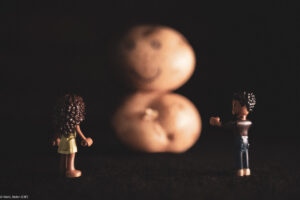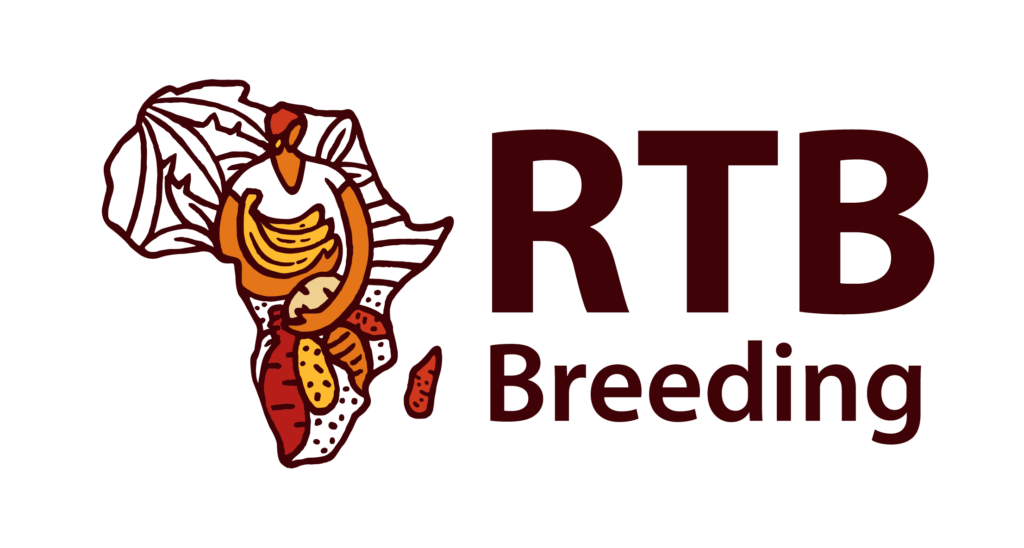The Scheinriese – the apparent giant – is a literary character from a children’s book I loved when growing up. The author, Michael Ende, describes him as a peaceful, empathetic, helpful, lonely (but sociable) gentleman named Tur Tur, who cannot help it that others fear him because of his apparent size when seen from afar. Coming

closer though he shrinks “to a man of just ordinary size”.
An altogether different sensation must have befallen IFPRI’s agronomists projecting African food productions until 2050: Roots, tubers, and bananas, in short RTBs, are all but surpassing any other crop family in value and net production. Yams, cassava, and plantain, crops that are largely farmed by smallholders, with low inputs on little plots, without machines or expensive infrastructure, are gigantic in agricultural terms. Hidden giants for that matter because necessary funding and crucial investments to improve their productivity are falling short. This needs to change.
How RTBs became the most important crops in Africa is easy to understand when looking at their versatility and resilience: they are cheap and easy to grow with little need for irrigation and fertilizer. Growing in diverse soils, roots and tubers are almost twice as effective as wheat or rice in turning natural resources into calories for human consumption. In a climate-stressed world, they seem to fare better under conditions of erratic rainfall, heat, and drought. At the same time, they are nutritious and rich in protein, vitamin C, A, zinc, and iron, meeting the dietary demands of rapidly growing and urbanizing societies.
How then are investments falling behind that of other crop families? The reasons are manifold and start with the fact that many RTBs do not lend themselves to mechanized production as is the case with cereals or livestock. Commercial investments are therefore difficult.
More importantly, people are simply not aware of RTBs’ impact on food security. Their role and potential in feeding Africa and the world beyond is a story rarely told. Perhaps because RTBs are farmed by “ordinary men” – or rather women.
Women, as farmers, market traders, processors, community educators and in many other roles, are crucial factors in the production of RTBs. Their structural disadvantage in receiving educational opportunities, loans, and land is hurting the development of RTB farming on the continent.
But the single most important reason is breeding. RTBs do not primarily propagate by seed but clonally, meaning that parts of the parent plant, such as stems, roots, or leaves, are used to generate genetically identical offspring, known as clones. In turn, they often have a limited gene pool and produce few or useless seeds. This makes breeding and the development of new varieties difficult, labor-intensive, and time-consuming. Yet any plant-based agricultural sector is reliant on the availability of quality varieties and seeds.
Despite these challenges, RTBs present significant opportunities. Scientific advancements and programs such as CGIAR’s RTB Breeding are enhancing genetic diversity and adapting these crops to changing environmental conditions.
In the upcoming weeks and months, we will use this space to highlight some of the impactful work of RTB Breeding scientists involved in developing improved plants and increasing seed and food production. With articles, explainer, and video reports, we want to tell stories of resilience and innovation. How research into RTBs can help people after natural disasters and in conflict ridden zones. What economic prospects they represent already today and how networks of scientists and policy makers contribute to regional integration and food security.
This comes not one day too soon: Just recently the World Meteorological Organisation warned that 2023 was the warmest year on record, confirming a global trend in rising temperatures. The consequences are starkly evident across regions like Southern Africa, where Zambia faces its worst drought in living memory. After no rainfall in its wet season, President Hakainde Hichilema pleaded for help on CNN on March 20, “This is the time when our staple food is maturing. But it’s gone. It’s wiped out. In six of our nine provinces the crop is gone.”
At the end of the children’s book, Scheinriese Tur Tur aids the story’s heroes in navigating their way out of a deadly desert where they were trapped. He becomes a living lighthouse, cautioning others against repeating the same mistake. Similarly, as land pressure intensifies and the climate crisis unfolds in the real world, RTBs may show us a path toward a more food-secure and stable future. But for that they need better breeding. And funding. Now.
–By Stefan Mohl
